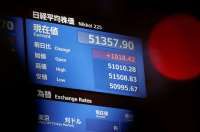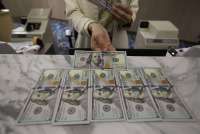INFLATION - WASHINGTON. U.S. consumer spending fell in December, putting the economy on a lower growth path heading into 2023, while inflation continued to subside, which could give the Federal Reserve room to further slow the pace of its interest rate hikes next week.
Consumer spending, which accounts for more than two-thirds of U.S. economic activity, dropped 0.2% last month, the Commerce Department said on Friday. Data for November was revised lower to show spending slipping 0.1% instead gaining 0.1% as previously reported. Economists polled by Reuters had forecast consumer spending dipping 0.1%.
The data was included in the advance fourth-quarter gross domestic product report published on Thursday, which showed consumer spending maintaining a solid pace of growth and helping the economy to expand at a 2.9% annualized rate.
Read Also: Oil Prices Firm on Upbeat U.S. Economic Data
The weak handover to 2023 raises the risks of a recession by the second half of the year, but also reduces the need for the U.S. central bank to maintain an overly aggressive monetary policy stance. The Fed's fastest rate hiking cycle since the 1980s has pushed the housing market into recession and manufacturing is in the early stages of a downturn.
Higher borrowing costs have undercut demand for goods, which tend to be bought on credit. Though growth in spending on services is helping to anchor consumption, some households, especially those with lower incomes, have depleted savings accumulated during the COVID-19 pandemic, limiting the scope of gains.
The personal consumption expenditures (PCE) price index edged up 0.1% last month after a similar gain in November. In the 12 months through December, the PCE price index increased 5.0% after advancing 5.5% in November.
Read Also: Gold Slips as Dollar Firms Ahead of U.S. Inflation Data
Excluding the volatile food and energy components, the PCE price index rose 0.3% after climbing 0.2% in November. The so-called core PCE price index rose 4.4% on a year-on-year basis in December after increasing 4.7% in November.
The Fed tracks the PCE price indexes for monetary policy. Other inflation measures have also slowed down significantly.
The Fed last year raised its policy rate by 425 basis points from near zero to a 4.25%-4.50% range, the highest since late 2007. Financial markets have priced in a 25-basis point rate increase at the central bank's Jan. 31-Feb. 1 meeting, according to CME's FedWatch Tool.
/2019/04/08/650615910p.jpg)









